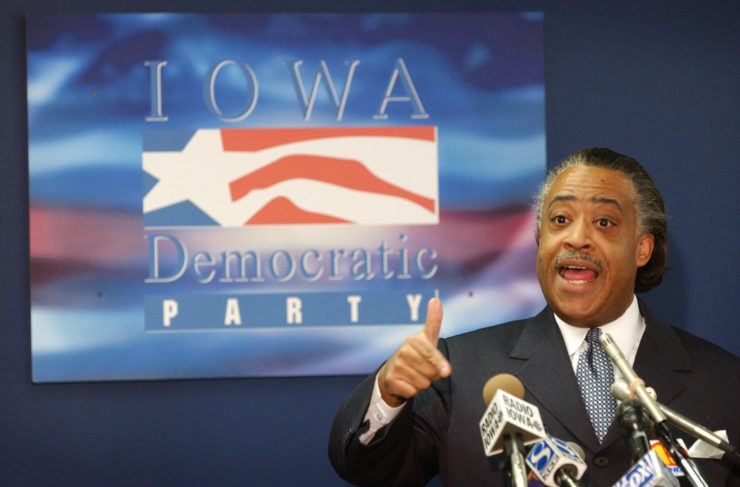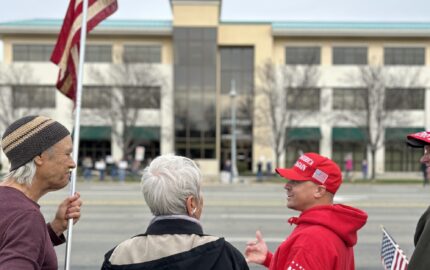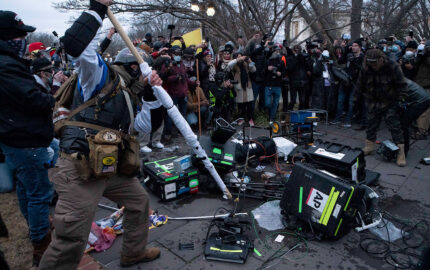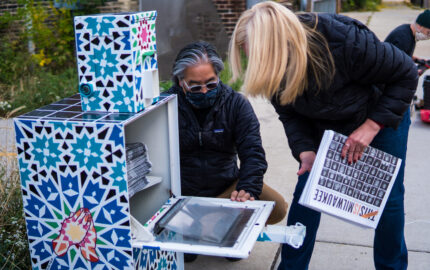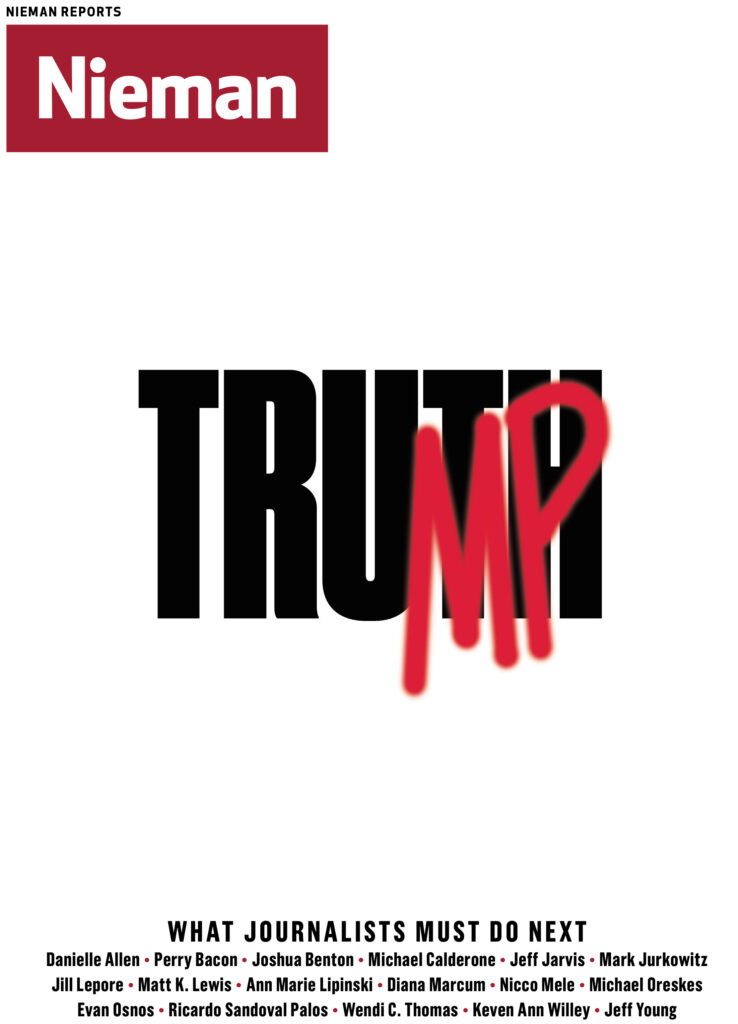
A fast-talking, prolific headline-making man from New York with a controversial record on the issue of race showed up on the political scene to run for the presidency of the richest, most-influential country in the world, and almost immediately the entire media apparatus declared his candidacy little more than a symbolic joke, a vanity run designed primarily to improve his national brand, not a true desire to command earth’s greatest military.
It would make for a few funny late-night jokes, but not much else, before the more traditional candidates took over center stage, they reasoned.
They were right.
The year was 2004. Al Sharpton didn’t get even a sniff of the Democratic nomination. He did so poorly in Iowa and New Hampshire, barely registering in the vote totals, he abandoned talk of trying to win and instead sought to secure a few delegates to take to the Democratic National Convention and adjusted his strategy accordingly.
Sharpton believed if he focused on the state of South Carolina—where he knew at least half of the voters in the state’s Democratic primary would be black and long dismayed by seeing the White House, House of Representatives, U.S. Senate, and Supreme Court in what they believed were hostile Republican hands and the airwaves dominated by the likes of Rush Limbaugh and the Fox News Channel—he’d have a shot of at least a good showing. He knew there was a sizable percentage of blue-collar workers, who happened to be black, who had suffered through a decades-long manufacturing decline and were stuck in domestic jobs cleaning ocean-front hotels and condos for a largely white tourism population while their kids remained mired in rundown, underfunded schools that came to be labeled “The Corridor of Shame,” before a not insignificant number of them would be funneled into a prison system where they’ve long been overrepresented.
Because of that, Sharpton was certain they would be willing to listen to just about anyone promising radical change, even if it was unconventional.
He was wrong.
Sharpton came in a distant third in South Carolina behind John Edwards and eventual nominee John Kerry, meaning the vast majority of black voters ignored what Sharpton was selling, despite the enormous, multi-layered challenges they were facing daily and a certain affinity they had for how Sharpton always spoke a kind of truth to power, even if he was an imperfect vessel.
But imagine Sharpton had pulled off what Donald Trump did this year and had taken the nomination and the White House. Would the media postmortem sound anything like it does today?
I doubt it would. There would be fewer calls for journalists to get out more in “the real world” and write sympathetic stories about the motivation of Sharpton voters and a greater focus on what should be the central question: Why did the country elect maybe the most unqualified major party nominee in history to be commander in chief? Because when you cut through the noise and shock, there is no more important question.
Trump is not a military hero with a demonstrated knowledge of the complexity of foreign policy. He is more akin to the Sarah “you can actually see Russia from land here in Alaska” Palin variety. He has never been elected to public office. He has no history of being an activist who rose to the top on the shoulders of a great horde of everyday Americans he had spent his adult life speaking for and helping. And even his supposed greatest qualification, his business background, is littered with stories of his shorting hundreds of small business people who worked for him, thousands of everyday Americans who felt scammed by Trump University, and countless investors and business partners who were left holding the bag as he dumped billions of dollars in obligations during six bankruptcy proceedings.
That doesn’t even include his leadership role in the bigotry of birtherism or scapegoating the Central Park Five or being caught on video bragging about casually sexually assaulting women just because he could, or that he was facing one of the most qualified candidates in history, even if you count her well-documented flaws.
Here’s the truth. Only a rich white man could have pulled this off in America. And that’s the reality many in the media still don’t seem to fully appreciate.
Sharpton couldn’t pull it off because there are not enough black voters who would ignore his lack of qualifications and controversial racial history; there are not enough black voters even if every single black voter overlooked Sharpton’s shortcomings. But there were enough white voters who did precisely that for Trump.
And it wasn’t just blue-collar whites. Trump won every income level among white voters and did best with those with incomes between $50,000 and $100,000. He even won white women despite the shock of his “grab ’em by the pussy” comments and the parade of women who alleged that he did some version of that to them. And he won the 18-29 white vote by 5 percentage points, even as most young voters of color overwhelmingly voted for Hillary Clinton.
The media are desperate to deny what’s been staring them in the face for a long time and instead keep pushing the narrative that it was about struggling white people fed up with their station in life and feeling left behind. Scratch the surface, and the superficiality of that argument reveals itself. There is not a single economic indicator being used by those arguing the “economic angst” narrative that more profoundly affects white Americans than people of color. Let’s not forget that white people remain more secure physically, educationally, economically, emotionally, and health-wise than black and brown Americans. They still have the best schools, whether public or private, still are more likely to receive callbacks when they submit a resume or try to locate a place to stay through Airbnb, still less likely to find themselves, or their children, in prison or poverty or shot by a cop, still control most levers of power in Washington, D.C., most state capitals and corporate and media boardrooms.
The media has been talking to Trump supporters all along; it just refused to deal with what those Americans were thinking about the issue of race
The media narrative that has unfortunately taken hold is one that paints a white America that had no choice but to ignore Trump’s bigotry and mistreatment of women because it was understandably frightened by its changing lot in life. But white America had a choice as much as black voters had a choice in 2004 when Sharpton came calling, even as white Americans continue having roughly 13 times the wealth of black and brown Americans.
White America—nearly 60 percent of white voters—put a man in the White House who scapegoated black and brown Americans every step of the way. They could have made a different choice but decided not to. We should not look away from that ugly reality.
Not only did Trump win every white income group, he did extremely well in counties that saw the best improvement in the jobless rate since 2010. This happened as the nation is in the midst of the longest monthly job creation streak in its history; the unemployment rate is at near full employment at 4.6 percent; poverty recently dropped by its largest percentage since 1968; we’ve just experienced the biggest annual increase in income on record—with the bulk of it going to the poor and middle class, not the rich—what was a record-high deficit fell by more than two-thirds since 2009; abortion, teen pregnancy, and crime rates are at or near all-time or decades-long lows; and the Democratic president expended an enormous amount of political capital to help blue-collar Americans keep their jobs in the auto industry and provided them with health care insurance and access that has already gone a long way to improve and save their lives. And on Wall Street—which saw the creation of trillions of dollars of wealth since 2009 as the stock market more than doubled—abuses were curtailed with record-level fines and regulations that saved the everyday American from credit card abuse, regulations fought by the likes of Trump and the GOP white America decided were the champions of the small guy.
Sure, despite the progress, millions of Americans are hurting, and many of them are blue-collar workers who happen to be white. But there’s never been a period in the history of America when groups of residents weren’t hurting—never—so that’s not a sufficient explanation for what happened. The country never elected a president this unqualified before this year, despite enormous upheaval and unrest that pockets of the populace have always experienced.
It is not happenstance that this comes on the heels of the breakthrough of 2008, when the undisturbed line of white men in the Oval Office was finally broken, and as the country entered a period when black and brown births began outpacing white ones.
And it matters little about what percentage of the Trump vote was because of his bigotry—like those of David Duke and other giddy white supremacists—or because people were desperate for some kind of change and were willing to risk it all on a man uniquely unqualified for the honor with which he was just bestowed. This election cycle made it known, in no uncertain terms, that there are enough white Americans who are either comfortable with, or not bothered enough by, Trump’s level of bigotry that they didn’t think it automatically disqualifying even in 21st-century America. Let’s not look away from that reality. Let’s deal with it.
And let’s not hold onto the myth that they were hidden, that they were missed by the media. That’s patently false. The media has used a lot of ink, online space, and airtime detailing the changes in the manufacturing industry. In 1999, I watched black men and white men cry on each other’s shoulders as a steel mill in our area suffered a major slowdown that eventually became a total shutdown years later.
The media has reported, in detail, the rise of drug addiction in largely white communities and states—with a level of compassion it could not or refused to muster when black communities suffered from such tragedy in the 1990s.
The media has profiled the top personalities of right-wing talk radio and TV and gave them a lot of time on mainstream outlets. It has talked about the struggles of military families and uncovered problems in the VA. Every police officer killed in action is treated like a hero and receives front-page coverage in their region, and sometimes nationally.
Those who oppose marriage equality and are staunch pro-lifers and believe race-based affirmative action is akin to reverse racism and hate “big government” (when big government isn’t benefitting them directly) have all been featured in media across the board.
Those who believe Christian persecution is no longer being able to mandate prayer in schools, having to sign documents to not have to provide contraception coverage in their private health care plans, or to be criticized for their traditional views while not being able to force everyone to say “Merry Christmas” instead of “Happy Holidays” have had their voices heard and amplified by the same media that is now publicly flogging itself for supposedly not having listened to those very people.
The media has been talking to Trump supporters all along; it just refused to deal with what those Americans were thinking about the issue of race. The media, in large part, often treats coverage of race as an appendage to “real news” coverage, not as a central pillar.
That’s why the media missed the story, not because they didn’t see the Trump supporters, but because they refused to examine them in all their full and complex humanity—which includes their racial views and how and why or if they could be influenced by the right kind of character selling bigotry to some of them while preaching a better day to the rest.
The media treated the racial ugliness it began encountering in the online comments sections and in emails and through Twitter and Facebook messages as just a racist fringe that should be ignored. The media refused to take what that meant seriously—that even non-racist people, even good people, under the right circumstances can be pulled into the orbit of a man selling open bigotry for a set of complicated reasons even the best social scientists have a hard time explaining.
That’s why the media never explored why #BlueLivesMatter grew up in response to #BlackLivesMatter and not when two Las Vegas police officers were ambushed during lunch by a white couple who had been among the protesters at the Cliven Bundy ranch or when the Department of Homeland Security began realizing that the biggest threat to law enforcement were so-called mostly white sovereign citizens—not a disturbed black man, like the one who killed five Dallas police officers. Does that mean #BlueLivesMatter was created, and that the approval rating of police—with 76 percent of Americans saying they have “a great deal” of respect for police, according to the latest Gallup survey—is just one point below the all-time-high recorded in 1967, not because police are in greater danger or that America appreciates them more, but because a sizable percentage of white America is threatened by the presence of black and brown people demanding more equality?
And, critically, the media ignored many journalists of color within its own newsrooms who had been screaming in a variety of ways that this reality had taken root in America and that it was no coincidence that it grew during the era of the first black president. Many in the media were—and still are—too fixated on a false binary of race, where there are good people and bad people, racists and non-racists, and the twain shall never meet. In real life, when it comes to race, there aren’t really good and bad people, only good and bad actions and thoughts and outcomes. Many journalists of color know this because most simply can’t ignore that reality because of their everyday experiences.
That’s what was learned during the civil rights era, but many media members have likely not taken the time to learn those lessons. Jim Crow did not and could not have survived in the South for as long as it did with only racist white Southerners because, despite stereotypes of the region, there simply were not enough avowed white racist Southerners to sustain such a wide-ranging system. It took the help of plenty of non-racists who either accepted it because they felt that’s the way things always were or participated in it because it made things seem more orderly and safe, at least for themselves and their families.
In the Myrtle Beach area where I live, there are stories of how rich white men in the mid-20th century helped fund the college educations of the kids of the domestics who worked for them, helping to enlarge the black middle class. But at the same time, those white men were strict adherents to the principles of Jim Crow—the black and white water fountains, the forcing of black adults to kowtow to white children, the unequal schools, the ropes extended into the Atlantic Ocean demarking where blacks could and couldn’t swim—and refused to sell property to black people, to help them build businesses outside a few select neighborhoods, and that created racial divisions and inequalities that remain.
Does that make them racists? Or something else? Or does that simply make them just like Trump, who knew to have just enough grateful black people in his orbit even while pushing policies and making pronouncements that will likely make the lives of black and brown people much less secure?
It’s as though the media doesn’t understand any of this—or why having a black cop shooting a black suspect does not negate the possibility of implicit bias. It’s as though the media never heard of the late Strom Thurmond, the segregationist U.S. senator from South Carolina who, at 22, fathered a biracial daughter after becoming involved with an African-American household servant of his parents, but went on to excite white supremacists while also being known for his personal attention to a not insignificant number of black South Carolinians.
The media, if it really wants to understand what happened, needs to look within. Everything that was revealed during this election was obvious to anyone willing to see. Too few journalists—and, frankly, too few white journalists—have been willing to think through their own role and so have played a part in a mass denial that created a false perception that a rich white man riding on the back of bigotry could not convince enough white people in this country to make him the leader of the free world.
